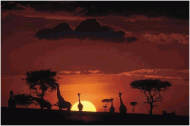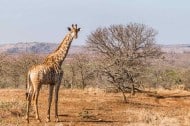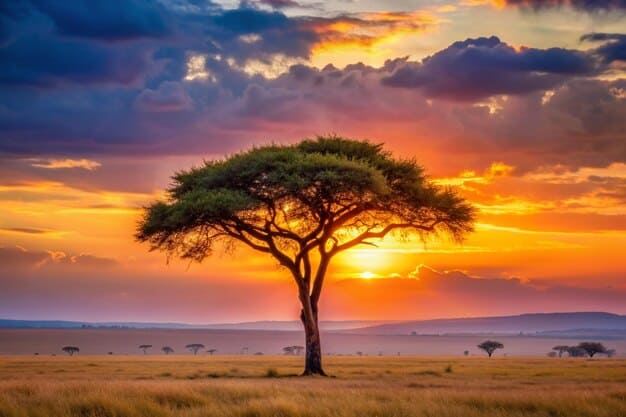
Best Time for a Masai Mara Safari
Introduction: Why Timing is Key for Your Masai Mara Safari
The Masai Mara National Reserve in Kenya is one of the most iconic safari destinations in the world, known for its rich biodiversity and incredible wildlife experiences. But did you know that the best time for a Masai Mara safari is not the same for everyone? Your ideal safari time depends on your preferences for weather, wildlife sightings, and even budget. Understanding the nuances of the seasons in Masai Mara can help you plan your trip for the best experience possible.
From the thrilling wildebeest migration to the quieter moments with local wildlife, each season in Masai Mara offers something unique. In this blog post, we’ll guide you through the best times to visit Masai Mara, detailing the weather, wildlife behavior, and the key events that make this safari destination so special.
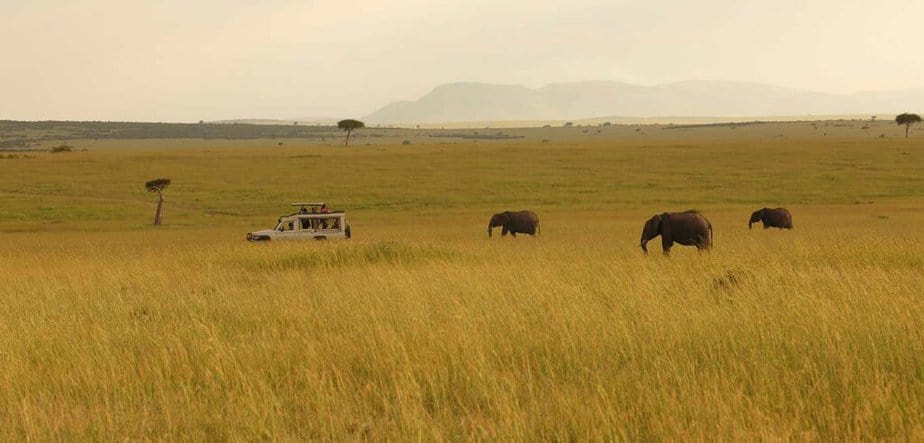
Understanding the Masai Mara’s Climate: A Year-Round Destination
The Masai Mara National Reserve enjoys a tropical climate, with distinct wet and dry seasons that play a crucial role in shaping your safari experience. Understanding these weather patterns will help you make an informed decision on when to visit.
The Wet Season (November to June)
The wet season in Masai Mara typically runs from November to June, with the heaviest rains occurring from March to May. During this time, the reserve becomes lush and green, creating a picturesque setting. However, the rain can make some areas of the park difficult to navigate, and wildlife sightings might be less predictable.
The Dry Season (July to October)
The dry season is generally considered the best time for a safari in Masai Mara, running from July to October. During this period, the grasses are shorter, and the vegetation is sparse, making it easier to spot wildlife. Temperatures are more comfortable, with warm days and cooler nights, and the game drives are often more productive.
The weather is not the only factor that makes the dry season so attractive. The lower rainfall means fewer puddles and muddy roads, allowing for easier access to various parts of the reserve. Plus, fewer tourists during certain months of the dry season make it possible to enjoy a more intimate safari experience.
The Dry Season: Best Time for Wildlife Viewing
The dry season is undoubtedly the most popular time to visit Masai Mara. It spans from July to October, coinciding with some of the most exciting wildlife events. This section will cover why the dry season is optimal for game viewing.
Why the Dry Season is Ideal for Safari
-
Wildlife Sightings: Easier to Spot Animals
The dry season sees animals congregate around the remaining water sources, making it easier to spot them. Since the vegetation is sparse, the animals’ movements are not concealed, giving safari-goers the chance to witness a variety of species in the open. -
Wildebeest Migration
The dry season coincides with the wildebeest migration, one of nature’s most awe-inspiring events. Between July and October, millions of wildebeest, along with zebras and gazelles, move across the plains in search of fresh grazing. The dramatic river crossings, where the animals must brave crocodile-infested waters, are one of the most thrilling spectacles in the natural world. -
Fewer Mosquitoes and Pests
The dry season sees fewer mosquitoes and biting insects, making it more comfortable for tourists and reducing the likelihood of malaria transmission. -
Ideal Game Drive Conditions
With less rain, the roads are in better condition, allowing for smooth game drives. The clearer skies also offer excellent conditions for photography.
Best Months for Wildlife Viewing
- July to October: These are the peak months for wildlife viewing, as animals are more concentrated around waterholes and the migration is in full swing.
- June and November: These shoulder months offer a balance between good wildlife sightings and fewer tourists, making for a more relaxed safari experience.
The Wet Season: A Different Safari Experience
While many people consider the dry season to be the best time to visit Masai Mara, the wet season also has its unique charm. This section will explore what to expect during the wet months, from the lush landscape to the quieter atmosphere.

Advantages of the Wet Season
-
Lush Scenery and Fewer Tourists
The rains transform Masai Mara into a vibrant green oasis, with lush grasslands and blooming plants. The reserve is much less crowded during the wet season, meaning you can enjoy a more serene and private safari experience. -
Birdwatching Opportunities
The wet season is also a great time for birdwatching. Migratory birds arrive during this period, making it a haven for bird lovers. The reserve is home to over 450 species of birds, many of which are more visible during the wetter months. -
Calving Season (January to March)
The wet season is also when many animals, such as antelopes, wildebeest, and zebras, give birth to their young. This is an excellent time for witnessing the miracle of life in the wild and catching young animals interacting with their mothers.
Challenges of the Wet Season
-
Heavy Rain and Muddy Roads
While the wet season brings lush landscapes, it also comes with frequent rainfall, making roads slippery and harder to navigate. Safari drives might be delayed, and some remote areas of the reserve may be inaccessible. -
Less Predictable Wildlife Sightings
Since water sources are abundant during the wet season, animals are dispersed across the reserve, making it harder to predict where to find them. However, this can make the experience of spotting wildlife even more rewarding.
Conclusion: Choose the Best Time for Your Masai Mara Safari
Whether you’re drawn to the thrill of the wildebeest migration in the dry season or the tranquility and beauty of the lush green landscapes during the wet season, Masai Mara offers something special year-round. Your perfect time to visit depends on your interests, but regardless of when you choose to go, a safari in Masai Mara promises to be an unforgettable adventure.
To make the most of your safari, plan ahead, consider the wildlife you want to see, and be prepared for the weather conditions. Once you’ve decided the best time for your visit, start preparing for the safari of a lifetime in one of Africa’s most iconic wildlife reserves.
Wildebeest Migration: The Ultimate Safari Event
One of the most iconic natural phenomena in the world, the wildebeest migration in Masai Mara is a must-see for any safari enthusiast. The event attracts thousands of visitors every year who wish to witness the awe-inspiring spectacle of millions of wildebeest, zebras, and other grazers moving across the plains in search of fresh grazing.
What is the Wildebeest Migration?
The wildebeest migration is a continuous cycle of movement involving approximately 1.5 million wildebeest, 300,000 zebras, and thousands of gazelles. This migration is a response to the search for food and water, and it happens every year, typically starting in the Serengeti in Tanzania and moving into Kenya’s Masai Mara between July and October.
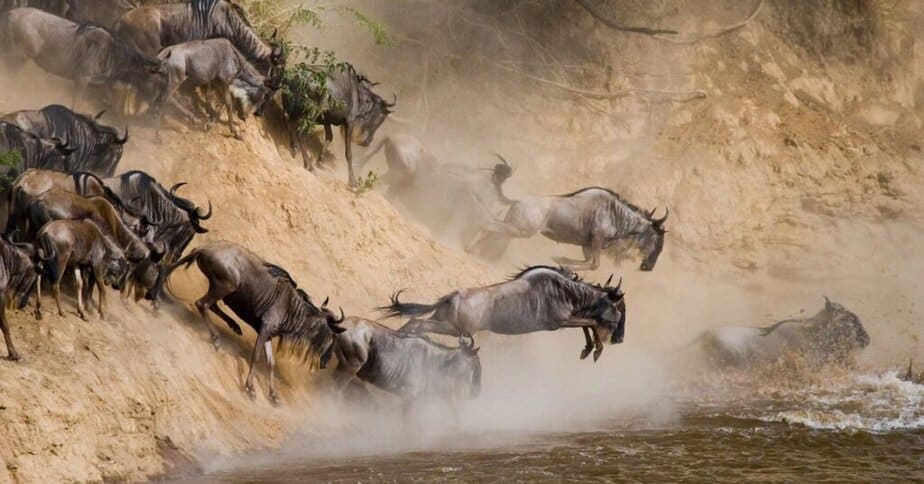
This migration is the highlight of any Masai Mara safari, offering visitors the chance to see one of the greatest wildlife events on Earth. While the exact timing of the migration may vary slightly each year, depending on weather patterns and food availability, the best months to visit to witness the migration are between July and September.
Why the Wildebeest Migration is Special
The migration itself is extraordinary not just because of the sheer number of animals involved, but due to the river crossings, where thousands of wildebeests brave the crocodile-infested waters of the Mara River. These river crossings are dramatic moments that provide a perfect opportunity for photographers and safari-goers to capture the raw power of nature.
Masai Mara Safari Tour Operators often highlight the river crossings as the event to witness, and while these events are unpredictable, the sheer scale and drama of the migration are a sight to behold.
Best Locations to View the Migration
- Mara River: The Mara River is the primary location for wildebeest river crossings. Most tour operators focus on this area as it offers the best chances for witnessing these dramatic moments.
- The Northern Serengeti and Lamai Wedge: If you’re visiting just before the migration moves into Masai Mara, these areas in the northern part of the Serengeti offer incredible viewing spots.
- The Southern Mara: In the months leading up to the migration, the southern Mara can offer great sightings as large herds begin to move northward.
When to Visit for the Wildebeest Migration
- July to September: This is the peak migration period, where the bulk of the migration moves into Masai Mara. The river crossings are most likely to happen during this time.
- October: By October, the wildebeest migration is starting to slow down as the animals head back toward the Serengeti, but it’s still an exciting time to visit.
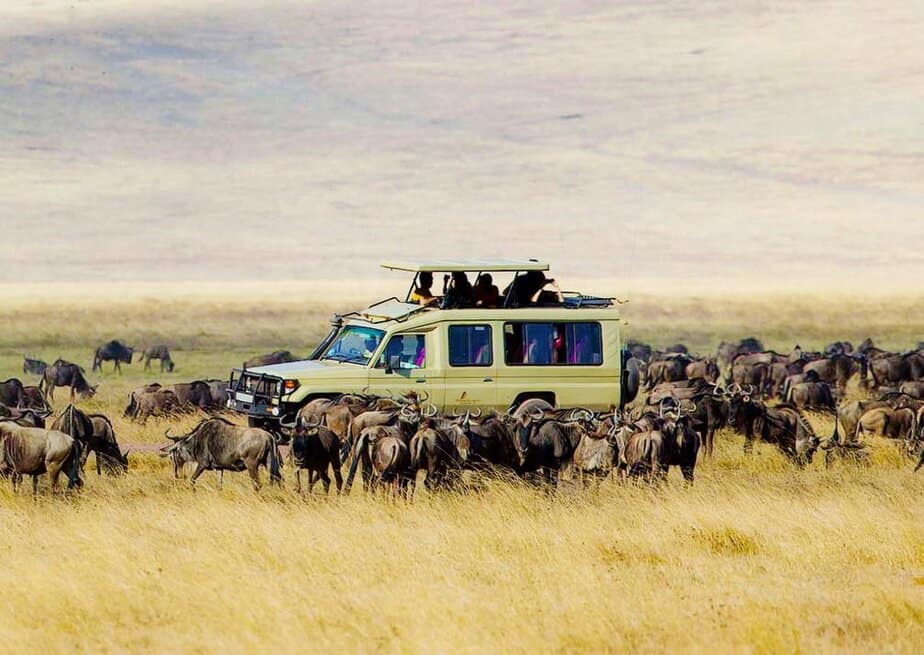
Best Time for Photography in Masai Mara
If you’re a photographer hoping to capture stunning wildlife shots, understanding the best time for photography during your safari is essential. Masai Mara’s landscape and wildlife offer countless opportunities to snap awe-inspiring images, but timing your shots for the best lighting and conditions is crucial.
Optimal Light Conditions for Wildlife Photography
The golden hours—early morning and late afternoon—are ideal for photography. The lighting is softer and warmer, helping to create the perfect atmosphere for wildlife shots. These hours also coincide with the animals’ more active periods, as they are often seen feeding or moving around.
- Morning: The early morning light provides excellent contrasts and soft shadows that highlight the animals and landscape beautifully. It’s also the best time to capture predators in action.
- Late Afternoon: As the sun begins to set, the warm hues of the golden hour provide dramatic backdrops for wildlife photography, especially in the more open savanna areas.
Best Time of Day for Wildlife Viewing
Most game drives in Masai Mara occur early in the morning (around 6-7 AM) and late in the afternoon (around 4-5 PM). These are the times when animals are most active—either feeding, hunting, or socializing. It’s also when the lighting is best for photography.
Packing Tips for Photography
- Camera Gear: A DSLR or mirrorless camera with a zoom lens (such as a 100-400mm) is essential for wildlife photography. Bring a tripod or monopod to stabilize your shots, especially during low light conditions.
- Filters: A polarizing filter can help reduce glare from the sun, especially during midday when the light is harsh.
- Extra Batteries and Memory Cards: A long day of safari photography can quickly deplete camera batteries, so be sure to carry extras, along with additional memory cards.
Planning Your Masai Mara Safari: Practical Considerations
When planning your safari, the timing of your visit plays a significant role in determining what you can experience. But there are several other factors to consider to ensure that your Masai Mara trip is smooth and enjoyable.
Accommodation Options for Different Seasons
Masai Mara offers a range of accommodation options, from luxury lodges to more budget-friendly tented camps. Many lodges and camps in Masai Mara have different prices depending on the season, with the dry season being more expensive due to higher demand. However, traveling during the shoulder months (April-May and November) can help you find better rates.
- Luxury Lodges: These offer exceptional service and exclusive views of the wildlife, perfect for those looking for a high-end experience.
- Tented Camps: For a more immersive experience, tented camps provide an authentic safari adventure with a closer connection to nature.
- Mid-Range Options: For travelers seeking a balance between comfort and cost, mid-range lodges and camps provide great experiences without breaking the bank.
How to Get to Masai Mara
Masai Mara is easily accessible by both road and air. Many tourists opt for a charter flight from Nairobi or other major cities, which takes about 45 minutes. Alternatively, you can take a road trip from Nairobi (approximately 5-6 hours) or from nearby towns.
Booking Your Safari
It’s advisable to book your safari well in advance, especially if you’re visiting during peak season (July to October). Booking in advance will ensure that you secure a spot in your preferred lodge or camp and give you the best options for game drives.
Packing Tips for Your Safari
- Clothing: Bring lightweight, neutral-colored clothing (such as khakis or greens) to blend in with the environment. A wide-brimmed hat and sunglasses are essential for sun protection.
- Footwear: Comfortable, sturdy shoes are necessary for game walks or nature hikes.
- Sunscreen and Insect Repellent: Protect yourself from the sun and mosquitoes, especially during the wet season when mosquitoes are more abundant.
- Binoculars and Field Guides: Bring binoculars for a closer view of wildlife and a field guide for identifying species.
Other Logistical Considerations
- Travel Insurance: Ensure that you have comprehensive travel insurance that covers health, trip cancellations, and emergency evacuations.
- Visa and Documentation: Visitors to Kenya need a valid passport, and a tourist visa is required unless you’re from a visa-exempt country.
- Health Precautions: Consult with a healthcare provider to get the necessary vaccinations before traveling to Kenya. Malaria is common in some regions, so you may need antimalarial medication.
Conclusion: Planning Your Masai Mara Safari
Masai Mara is one of Africa’s most renowned safari destinations, and the best time to visit depends on your preferences for wildlife sightings, weather, and overall experience. The dry season (July to October) offers the best conditions for wildlife viewing and the chance to witness the famous wildebeest migration. On the other hand, the wet season provides a different, quieter safari experience with lush landscapes, fewer tourists, and excellent birdwatching opportunities.

No matter when you choose to visit, the Masai Mara is sure to deliver an unforgettable safari experience. Whether you’re after stunning wildlife shots, thrilling river crossings, or simply a tranquil escape into the wild, Masai Mara promises adventure and awe at every turn.
Are you ready for the ultimate Masai Mara safari? Plan your trip today, book your safari with a reputable tour operator, and prepare to immerse yourself in the magic of one of the most extraordinary wildlife habitats on Earth.
